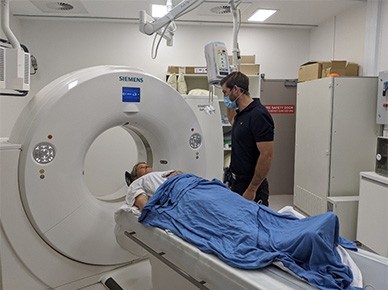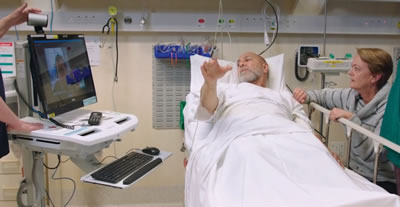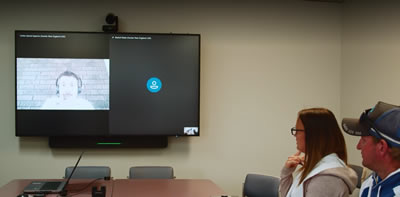Stroke patients from across North West NSW have 24-hour access to an innovative new telehealth service that is saving many lives in regional and remote NSW.
Launched in March 2020, the NSW Telestroke Service is now available at sixteen locations in regional and rural NSW and connects local emergency physicians with expert stroke clinicians via video consultation to quickly determine the best treatment plan for a stroke patient.
Susan Heyman, Executive Director of Rural and Regional Health Services in the Hunter New England District said, “These options include urgent treatment to dissolve a clot with ‘clot-busting’ thrombolysis here in Tamworth, or urgently transferring the patient to a specialised stroke centre for more complex treatment.”
eHealth NSW is proud of the vital role it is playing in providing the technology solutions that make the Telestroke Service possible.

A key component is the Statewide Enterprise Imaging Repository (EIR) which provides the Telestroke Neurologists with rapid access to world class multimodal CT brain imaging for each stroke patient.
Telestroke will be gradually rolled out to 23 sites by June 2022 and leverages the significant investments made by eHealth NSW in Statewide Infrastructure, Networking and Unified Communications.
Professor Ken Butcher, Medical Director, NSW Telestroke Service at the Prince of Wales Hospital said, “Centralised imaging is a critical component of the NSW Telestroke Service. Diagnostic and treatment decisions are based on acute stroke images. It also provides access to historical images.”
Valerie: a patient story
One of the many patients thankful for Telestroke is Valerie from the Shoalhaven region on the South Coast. Valerie went to visit her son and when he opened the front door to greet her, he noticed his mother had slurred speech, and called an ambulance straight away.
Valerie was transported to the Shoalhaven District Memorial Hospital where Telestroke Neurologist, Dr Carlos Garcia Esperon from Hunter New England Local Health District, assessed her. By then, Valerie was paralysed on her left side and couldn’t speak.
Valerie was prescribed the appropriate medicine and later transferred by road to the Prince of Wales Hospital in Randwick for a procedure that removed the blood clot.
“By the next morning, my condition had returned to normal, and I was kept in hospital for observation for another three nights,” said Valerie.
“I couldn’t be more grateful, knowing strokes can have a permanent impact on your life.
“My family were so relieved that I received instant care,” Valerie added.



